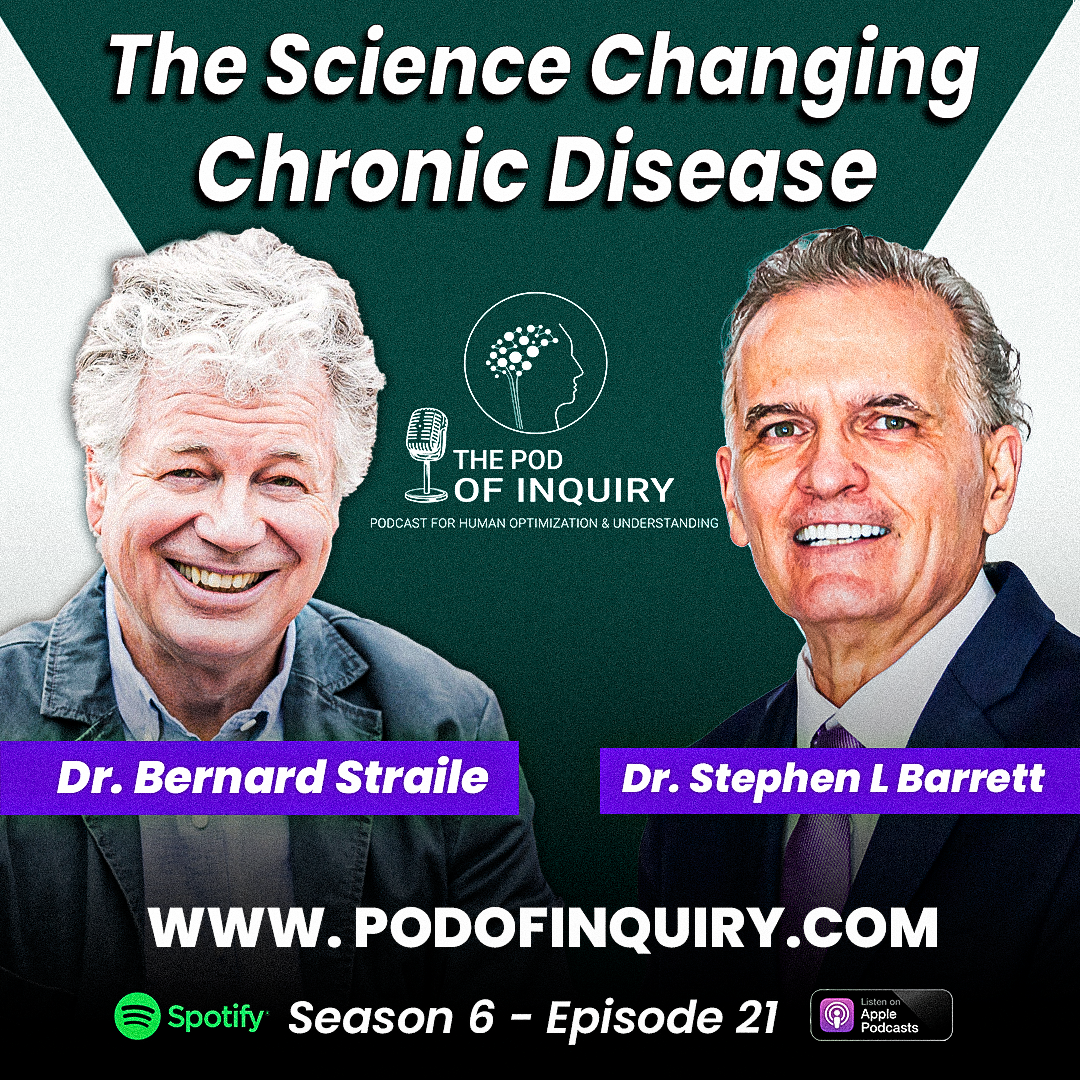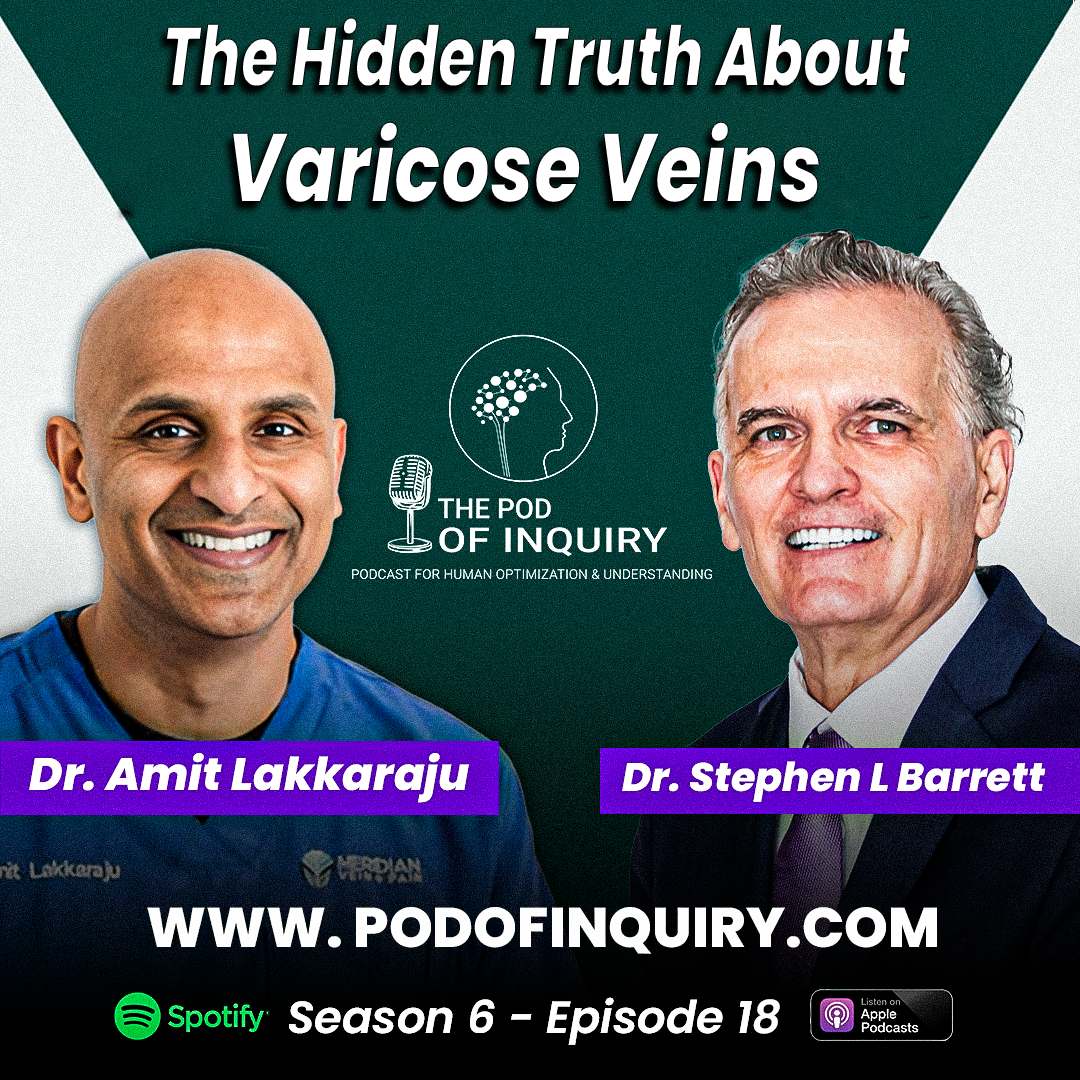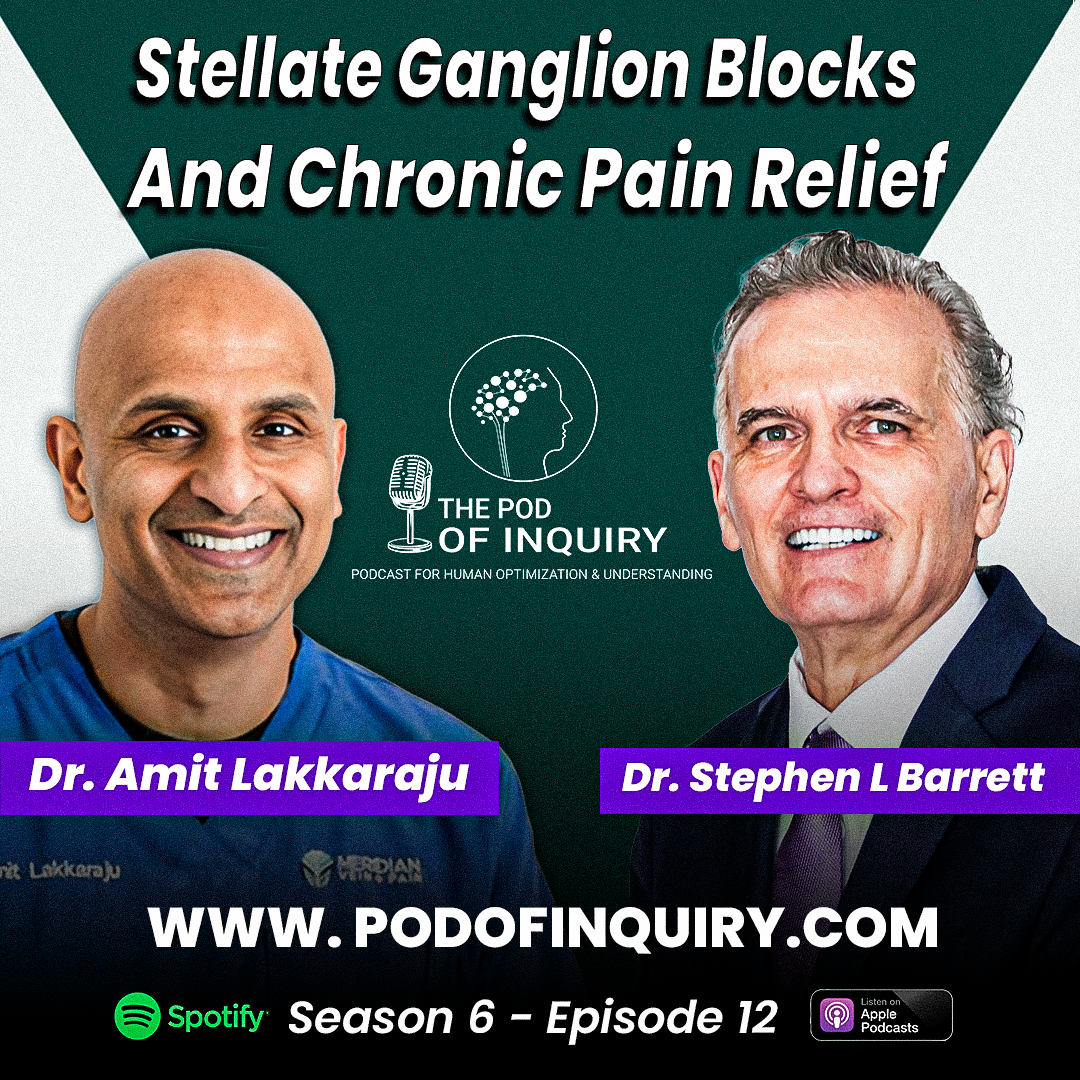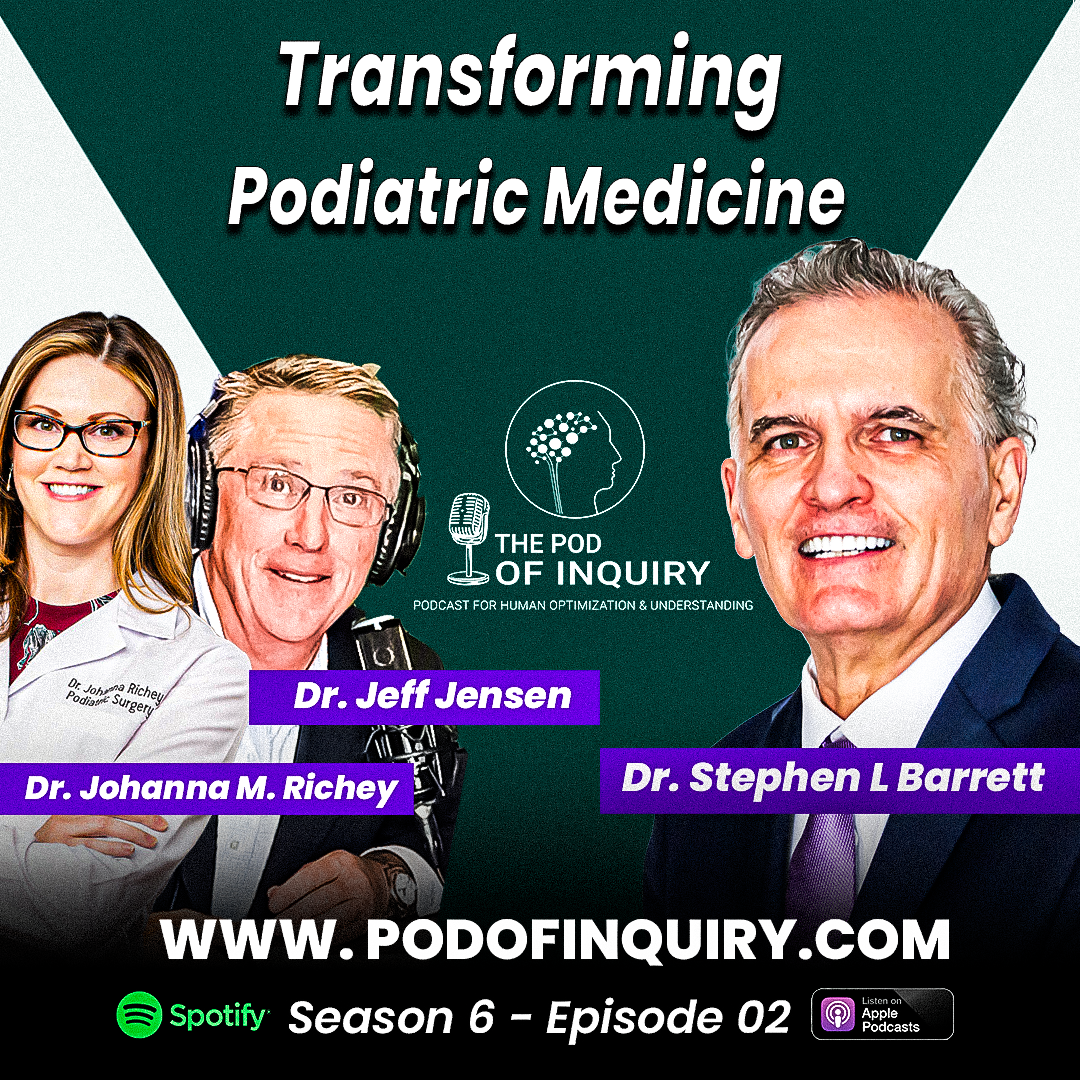Ready to delve into the cutting edge of nerve pain relief? In our next episode of Pod of Inquiry, we’re thrilled to welcome Dr. Edgardo Rodriguez-Collazo, DPM, a renowned foot and ankle surgeon specializing in neurosurgical techniques for pain management.
Dr. Rodriguez-Collazo will shed light on nerve transfers, a fascinating and often under-discussed approach to chronic pain. We’ll explore:
- How nerve transfers work: Get the inside scoop on this innovative technique that reroutes nerves to alleviate pain.
- Conditions treated: Discover the range of pain conditions, from foot and ankle pain to complex regional pain syndrome, that can benefit from nerve transfers.
- Surgical techniques: Dr. Rodriguez-Collazo will demystify the nuances of different nerve transfer procedures and their potential benefits.
- This episode is a must-listen for anyone struggling with chronic pain and curious about alternative treatment options. Whether you’re facing foot and ankle pain, or grappling with a broader pain condition, Dr. Rodriguez-Collazo’s insights offer hope for a pain-free future.
Don’t miss this informative and empowering episode! Tune in to Pod of Inquiry and join us as we delve into the fascinating world of peripheral nerve surgery with Dr. Edgardo Rodriguez-Collazo.
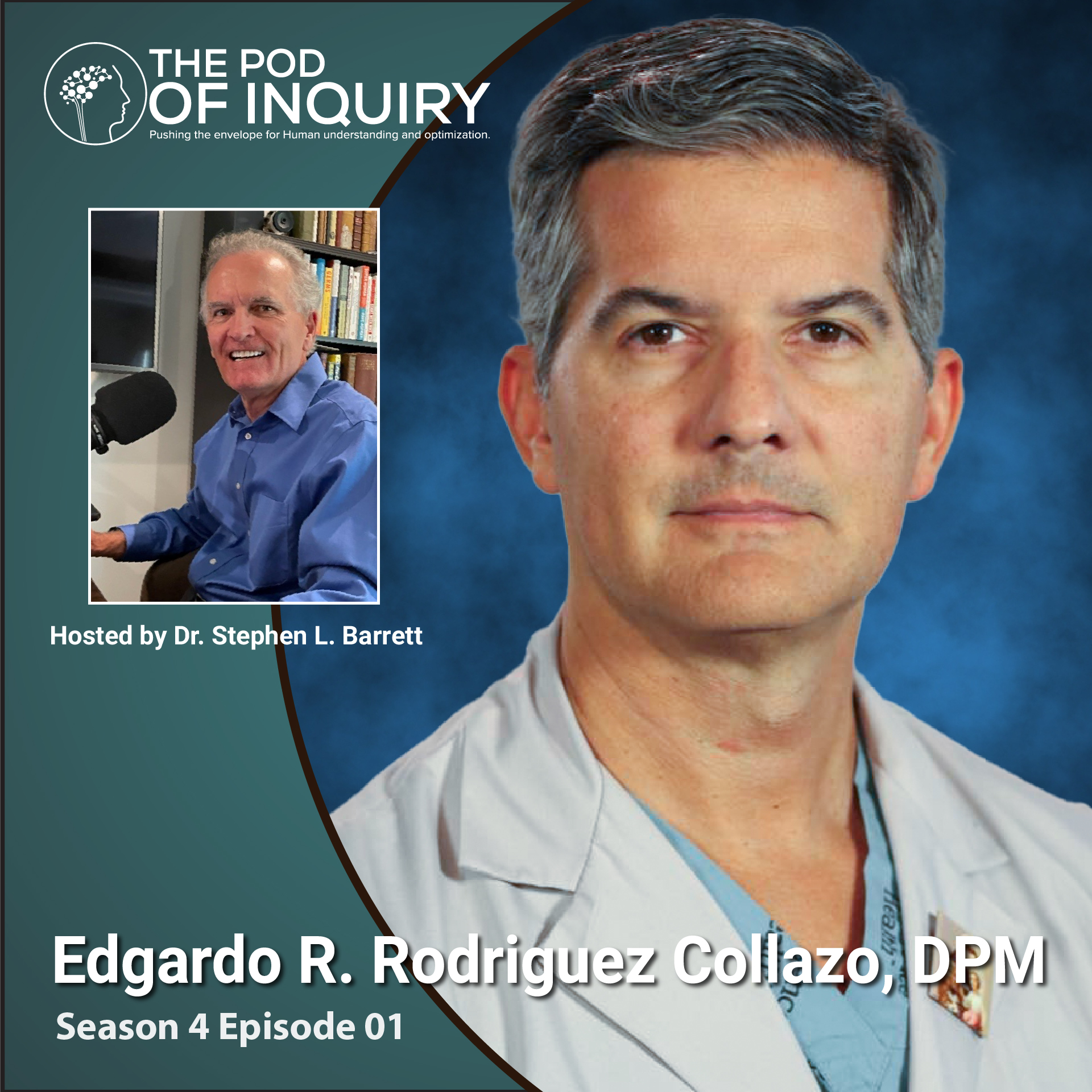
Watch The Podcast for Podiatrists
Listen to The Podcast for Podiatrists
Also available on
Show Notes from this episode
Edgardo R. Rodriguez Collazo, DPM
Adult & Pediatric Ilizarov Lower Limb Reconstruction/Lower limb Peripheral Nerve Surgery
Director, Chicago Foot & Ankle Deformity Correction Center
Director, Lower Extremity Deformity Correction & Microsurgical Limb
Reconstruction Traveling Fellowship Program
Presence St. Joseph Hospital/Saint Anthony Hospital, Chicago, Illinois
Dr. Barrett 00:31
But before we get started and dive into that, why don't you tell everybody, maybe there's a few people that don't know who you are, what you've done up there, and maybe talk about class a little bit, because I think you've really established some great educational platforms.
Dr. Rodriguez-Collazo 02:38
Thank you for having me. I think it's, it's awesome. It's always great to be with you and do something together. I mean, we have been really collaborating since 2000, believe it or not, so it's been a long process and journey for both of us. So, I'm still practicing Chicago. So, in the in that process, a we have a fellowship program on a yearly basis that we have been able to have some surgeons now that are more involved in academic events, especially on peripheral nerve and also in plastic reconstruction of the limb.
Dr. Barrett 04:34
Wow, that's fantastic. Now is this the first year that you've moved from Chicago down to Texas?
Dr. Rodriguez-Collazo 04:40 Talks about his CLESS program
Dr. Barrett 05:53 Introduces his new papers
Dr. Rodriguez-Collazo 06:37
Then 10 cases, but I tracked those for over four years, I'm still performing those procedures. And patients are a they just traveled to Chicago for that. There's not that many surgeons that are performing that procedure in particular. But I basically when I developed that procedure, it was basically to extrapolate to procedures that they were performed at that time for a for the same pathology and taking some of the data from brachial plexus injuries and extremity paralysis. And basically, in the process of developing that technique, I dissected a before I started really performing that procedure and really getting to the point that I was teaching the procedure. I taught the procedure for quite some time.
Dr. Barrett 07:51
Has there been any evolution in what you've been doing as far as this particular procedure is concerned?
Dr. Rodriguez-Collazo 08:13 Describes end to side transfer technique
Dr. Barrett 11:09
You're focusing primarily then on tibialis anterior I would assume.
Dr. Rodriguez-Collazo 11:13
There's branches of the that are that are going to the extensor digitorum longus right. So, there's a lot of same as in plastic crossover flow crossover perforator flow so is basically in the lower extremity you be surprised that there's a lot of the same similarity we it's not isolated nerve to specific area, but it conjunction on a combine of fascicles now.
Dr. Barrett 12:00
I've seen some different things on the actual nuances of the end to side an anastomosis Are you just basically opening up the epithelium and plugging it into the epineurium and how are you handling that particular aspect of the procedure?
Dr. Rodriguez-Collazo 12:15 Explains some of the nuance
Dr. Barrett 16:21
What are you doing postoperatively?
Dr. Rodriguez-Collazo 16:33
No, no perfectly. So basically, one week, I put them in ACL, knee brace, and quit, they cannot extend or flex the knee. The procedure is done without any type of tourniquet or ischemia. Just because I really want to be able to control bleeding to the best of my abilities. And there's a lot of septal perforators in that area that you need to cauterize and control very well. And I'm always in the you're asking the anesthesiologist what is their blood pressure because you may have good hemostasis.
Dr. Barrett 17:39
We find that we're using fewer and fewer tourniquets. Now there are a couple of procedures that will routinely on but we always put a tourniquet on in case we need it.
Dr. Rodriguez-Collazo 17:52
So basically, recovery is basically three weeks in which I like to use staples in that area. So, if there's any bleeding, it can come out right.
Dr. Barrett 18:15
In your data that you compiled in that study, some of those folks had some pretty long durations of let's call it lack of function. And you know that the motor end plates tend to drop out. You know, there's the arbitrary timeline of 13 months, I don't know where that came from. Because I've seen people that have been, you know, suffering from drop foot, they're like zero out of five motor strength for five years, and you do something and all of a sudden it comes back. So, I don't know how true that is. But what was your experience, shoulder race, shorter duration, better outcome?
Dr. Rodriguez-Collazo 18:55
I think that for the type one nerving theory, the narrower apraxia. The sooner the better, no doubt about that, the sooner you can do a neurolysis of that nerve, the better they're gonna do. And I think that that's everybody can agree on that.
Dr. Barrett 19:12
I'm not sure everybody does agree on that. Because we have people come in all the time. And they say, Well, I had this I got this drop foot after my knee surgery or after a hip surgery and they just said well just wait for six months, 12 months and I mean, that's a, I think a gross misunderstanding of the process.
Dr. Rodriguez-Collazo 19:32
So, I think that the key is constantly monitoring these patients and constantly ordered nerve conduction studies.
Dr. Barrett 21:22
I don't know if you know much about the Phoenix Sign. But we've been talking about that quite a bit for the last five years.
Dr. Rodriguez-Collazo 21:51
I think it's fantastic. What you did what you put together on that sense, because that the Lidocaine is going to relax the muscle. So basically, by relaxing the muscle, the nerve that is going on underneath, okay, it's going to have less compression.
Dr. Barrett 22:07
I don't think it's a muscular phenomena Edgardo because we're only using two tenths of a cc. And so I you wouldn't get that much skeletal muscle relaxation from papaverine. So, I think its strictly vasodilation.
Dr. Barrett 22:38
Right. And the and the other thing that we've seen that's very interesting with us, and we just finished a prospective double blinded study comparing lidocaine with papaverine. We found equivalent results in both groups. So, we pretty much have taken the theory that there's some phenomena associated with the anesthetic part of the local anesthetic and it really, I think, is a is a vasodilation
Dr. Rodriguez-Collazo 23:42
You had a great point. And in like you so well put together that article is a great way to know really, for the patient's sake also a they can have their hope. And exactly. And I think hope is great to see that on these type of patients.
Dr. Barrett 24:58
Let's circle back to the thing where these patients are said, you know, they're told, hey, just wait a year and see how it goes. And then most of the time, it doesn't go so well, because the nerve has further trauma or further degeneration to it, motor and plates are starting to drop out. So, I think it's a great disservice to the patients, for them to be told this. And that's what's so powerful about this because it's not a hard test to do, it's very inexpensive, you have to have a little bit of ultrasound experience. But within five minutes, you can tell this patient, whether they have a good chance at regaining everything, or they may have to go into the nerve transfer arena. So, it's a very powerful thing. I mean, you know, I think of all of you know, the nerve blocks that we do, we've been just 99% of time focusing on how much pain is relieved from this block that we're, you know, we're putting on. But that's even interesting if you think about it, because how many times have you given a peripheral nerve block for pain, and you put in a very little amount, and they don't have any their pain goes away, but they don't really have any or they or they don't have really any noticeable anesthetic effect, their sensation actually is increased their muscle strength increase, but yet they say, Oh, my pain is gone. So, is that just a phenomenon of the local anesthetic from its anesthetic action? Or is it maybe I just got some more blood to this nerve? And now it's functioning a little bit better? I don't know the answer to that.
Dr. Rodriguez-Collazo 28:13
I think that what you're doing is basically providing more blood flow to that area. So, I think that that's really the key point.
Stephen Barrett 30:27
So, the other one of the other articles that you published, which I found very interesting was your reset Neurotomy paper.
Dr. Rodriguez-Collazo 30:48
It's an amazing yeah. One is it's a it's one of my top procedures right now that I offer my patients.
Dr. Barrett 31:56
Explain to the audience what we're talking about from a technique standpoint.
Dr. Rodriguez-Collazo 32:00
So, once you identify a compromised nerve, let's say that is the anterior aspect of the leg. More, perhaps most likely, the target net will be the superficial peroneal nerve.
Dr. Barrett 33:34
How long is your allograft?
Dr. Rodriguez-Collazo 33:39
So, I tried to put a gap of three centimeter with a conduit in both sides.
Dr. Barrett 34:53
And even if even if you're not getting full sensation restored, you probably are still doing well from a pain standpoint.
Dr. Rodriguez-Collazo 35:03
Always say you restore quality of life. So, in the lower extremity compared to the upper extremity when you eliminate pain from the extremity used or life in the upper extremity when you eliminate sensation, you create a disability. So, it's a completely different and that's something that I explained to my colleagues all the time that either sensation is not restored completely is a successful case the patient can kind of kind of active move I can I can sleep at night, as you know very well, a lot of these patients are suicidal they on they can asleep at night, right?,
Dr. Barrett 36:13
The superficial peroneal is more difficult to take care of than the sural. Just simply because I think it has a bigger brain map and brain doesn't like it when we take away a lot of that cortical surface activity.
Dr. Rodriguez-Collazo 36:41
And that's right. So, the Sural has eight variations. And the superficial peroneal nerve has four and Saphenous has three. So, what you've been taught, you've been taught in school of anatomy is not quite what we see on a weekly basis. So, I think that ultrasound guided nerve block is mandatory to be identify if the sural is a branch of the common or is a branch of the tibia, or it's a combined branch or two separate branches at the distal 1/3.
Dr. Barrett 38:19 What does your experience with Saphenous and SPN show?
Dr. Rodriguez-Collazo 40:11
Explains his experience
Dr. Barrett 42:07
I think it'd be pretty hard to disagree with that. And the sad thing is, is that we can train up a whole boatload of people and it's still not enough to take care of all of the peripheral nerve pathology that's out there. It's extraordinary how many people are suffering from a peripheral nerve injury?
Dr. Rodriguez-Collazo 42:26
Yeah, and I think that that's reason what the, the AENS, I'm a big fan of them in the sense that a promoting basically and inadequate education at basic the diagnosis, I taught my residents and fellows all time after a major trauma to lower extremity. If the patient is complaining of symptoms at night when they're not on any type of weight bearing forces or biomechanical, or range of motion. Think about nerve injury right away.
Dr. Barrett 43:08
I think what you're doing with class and your training, and, you know, the crossover with the AENS, I think, you know, we are starting to get a lot more people trained. And, you know, awareness then brings implementation.
Dr. Rodriguez-Collazo 43:33
Yeah, and I think that the symposium provided a great platform for continuing education hands on for surgeons, I'm the I'm the first one in the lab, dissecting, I'm pulling to my table A what exactly you're doing now. So, the collaboration is great. And I'm excited to be in the unmeaning. Because I'm actively dissecting for my own knowledge. As a consequence of the symposium, I said, Well, how what else we can do for the traumatology, orthopedic and pediatric surgeon to continue some collaboration all year round. And that's when I developed and I created the American orthoplastic microsurgical society.
Dr. Barrett 44:33
And, you know, education is very powerful, not only for the physicians and surgeons, but also for the patients because, like we said, there's so many people running around with these pathologies that hardly anyone knows, you know, what to do about it. A great example is total knees. I mean, there's very if you look in the literature, it's pretty I think it's pretty underestimated how many injuries there are to the common peroneal nerve after total knees and total hips. Some say it's like 1%. Other say it's about 4%. There was a anesthesiologist, pain management specialist from the Hospital for Special Surgery that presented, I think it was a five or seven year, retrospective review of, I think it was close to like 30,000 patients, it was a lot. And they found that it could be as many as a third of patients that undergo these procedures will have some, you know, sequela, that involves nerve pathology. So that's a lot. And then, yeah, yeah, and I can't tell you how many folks have come to our office, and they've had a total knee, and they've had chronic pain. And they, they had multiple imaging, they there's nothing loose with the implant, there's no, there's no infection, it's perfectly aligned. But yet these patients have pain. And it's a simple nerve, whether it's a small genicular branch, or maybe a bigger branch, like the common, and all of a sudden you take care of this. And their range of motion goes from restricted to full range of motion instantly, and their pain goes away. And it's a simple thing to take care of, but think about 99% of ortho doesn't even recognize that, hey, this, this nerve could have been injured a little bit not that they did anything wrong. It's just nature inherent in the in the procedure itself. But think about how powerful it is, if we can get this knowledge out, I mean that you could have a whole practice just on that subset of patients.
Dr. Rodriguez-Collazo 46:32
And the that reminds me of a patient that was scheduled for a high tibial osteotomy to offload the medial compartment of the of the knee. And she had an appointment to see me the week before the procedure was scheduled, because has some infection has some neurotic symptoms in the lateral compartment of the leg. So, I gave the patient our ultrasound guided nerve block of the branch from the common to the knee. And the patient’s pain completely went away.
Dr. Rodriguez-Collazo 48:16
I started performing peripheral nerve as surgery as a result of limb lengthening procedures. So that was the beginning for me. So, I started getting involved in limb lengthening procedures, Angular correction, pediatric and adult, especially trauma patient with shortening posterior fractures by long fractures.
Dr. Barrett 49:12 15-20% are suicidal
I hope we can cross paths in the near future and I always get energized when I hang out with you.
Dr. Rodriguez-Collazo 52:14
Thank you. Fantastic. Well listen, we're gonna make it happen then in 2024

